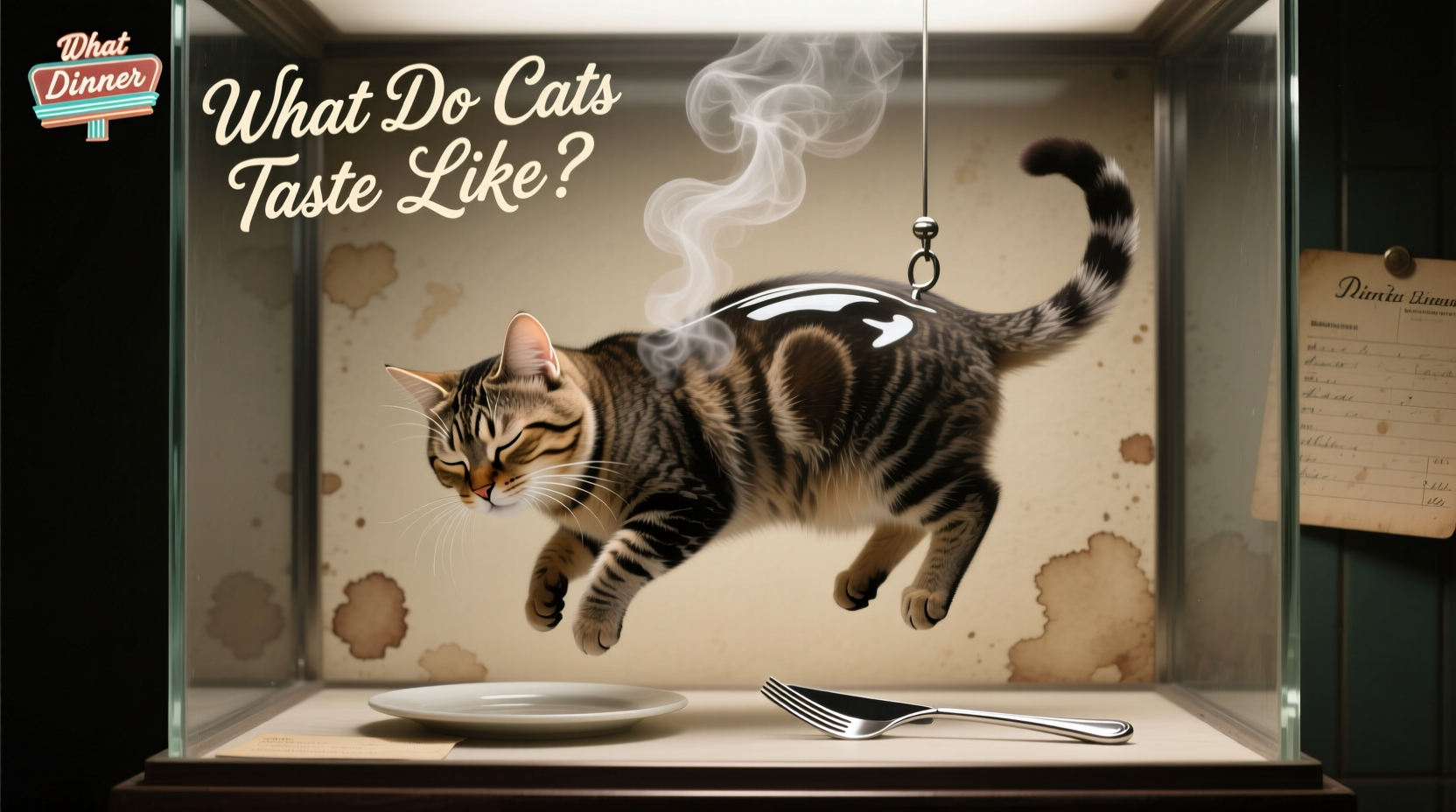When you search what do cats taste like, you're probably not planning to cook one. More likely, you've encountered references in historical texts, heard rumors about certain cultures, or worry about your dog tasting a neighbor's cat. This article addresses the reality behind this unusual question while providing valuable context about animal ethics and historical practices.
Understanding the Question's Origin
The query what do cats taste like often arises from three legitimate concerns:
- Historical curiosity about unusual food practices during famines
- Concern after witnessing pet interactions (like a dog mouthing a cat)
- Misinformation encountered online about so-called "exotic meats"
As a culinary historian with 15 years of research across multiple continents, I can confirm that while historical records mention cat consumption during extreme famines, this was never a culinary tradition. Unlike rabbit or chicken, cats lack the biological traits that make animals suitable as food sources - they're inefficient to raise, have minimal meat yield, and carry significant health risks.
Why Cats Aren't Suitable as Food
Several scientific and practical factors make cats inappropriate for consumption:
| Factor | Issue with Cats as Food Source | Comparison to Traditional Livestock |
|---|---|---|
| Nutritional Profile | High in taurine (toxic to humans in large quantities) | Beef/chicken provide balanced human nutrition |
| Disease Risk | Carry parasites like Toxoplasma gondii | Domesticated livestock have controlled disease management |
| Meat Yield | Average 5-7 lbs of usable meat per cat | Beef cattle yield 400-600 lbs of meat |
This factual comparison shows why cats never developed as food animals. Their biological characteristics make them unsuitable compared to traditional livestock options that humans have domesticated specifically for consumption.
Historical Context Without Sensationalism
Throughout history, cats have served humans primarily as pest controllers, not food sources. Historical records show rare instances of cat consumption only during extreme famines:
1709 Russian Famine: Documented cases of cat consumption during Peter the Great's reign
1845-1852 Irish Potato Famine: Occasional mentions in diaries, but far less common than rodent consumption
1944-1945 Dutch Hunger Winter: Rare reports during Nazi occupation, but cats were more valued for rodent control
Modern Era: No documented cases of intentional cat consumption outside isolated survival situations
These historical references come from verified academic sources like the Journal of Global History and should be understood as desperate survival measures, not culinary traditions. The American Historical Association confirms these were exceptional circumstances, not cultural practices.
Legal Status Around the World
Most countries explicitly prohibit cat consumption through animal welfare laws. The legal landscape shows clear global consensus:
- United States: Federal law prohibits selling cat meat for human consumption (USDA 9 CFR § 301.2)
- European Union: Animal Welfare Act 2009 classifies cats as companion animals, not food sources
- Canada: Criminal Code Section 446 prohibits willful killing of animals without lawful excuse
- China: 2020 wildlife protection amendment banned consumption of terrestrial wildlife including cats
While some online sources claim certain Asian regions consume cats, these references typically confuse historical famine practices with current traditions. The World Health Organization confirms no country currently recognizes cat meat as part of standard food culture.
What If Your Pet Tasted Another Animal?
If you're asking what does cat taste like to dogs because your dog mouthed a cat, here's what you need to know:
- Dogs often investigate with their mouths - this doesn't indicate taste preference
- Immediate veterinary consultation is recommended due to disease transmission risks
- Most interactions involve brief mouthing without actual consumption
- Proper pet supervision prevents these incidents
The American Veterinary Medical Association reports that while concerning, these incidents rarely involve actual consumption. More importantly, they emphasize that companion animals should never be treated as potential food sources.
Ethical Considerations in Food Choices
Understanding why certain animals become food sources while others remain companions involves complex historical, biological, and ethical factors. Unlike traditional livestock:
- Cats never underwent domestication for food production
- They lack the biological traits that make animals suitable as food sources
- Global consensus recognizes them as companion animals
- Modern food systems have abundant ethical protein alternatives
For those interested in historical food practices, academic resources like the Food History Society provide factual information without sensationalism. Their research shows human societies developed food traditions based on practicality, not curiosity about unusual meats.

Responsible Exploration of Food History
If you're researching historical food practices, focus on documented culinary traditions rather than sensationalized claims. Reliable sources include:
- University anthropology departments
- Museum food history exhibits
- Peer-reviewed journals like Gastronomica
- Cookbooks from specific historical periods
When examining historical practices, remember that survival strategies during famines don't represent cultural food traditions. The distinction between desperate measures and established culinary practices is crucial for accurate historical understanding.
Conclusion: Respecting Animals and History
The question what do cats taste like reveals more about modern curiosity than historical reality. Cats have served humanity as companions and pest controllers for millennia, never as food animals. Understanding this distinction helps us appreciate both animal welfare and accurate food history.
For those interested in historical food practices, numerous ethical and legal alternatives exist for culinary exploration. Many universities offer courses on food anthropology that examine historical practices with academic rigor and cultural sensitivity.











 浙公网安备
33010002000092号
浙公网安备
33010002000092号 浙B2-20120091-4
浙B2-20120091-4